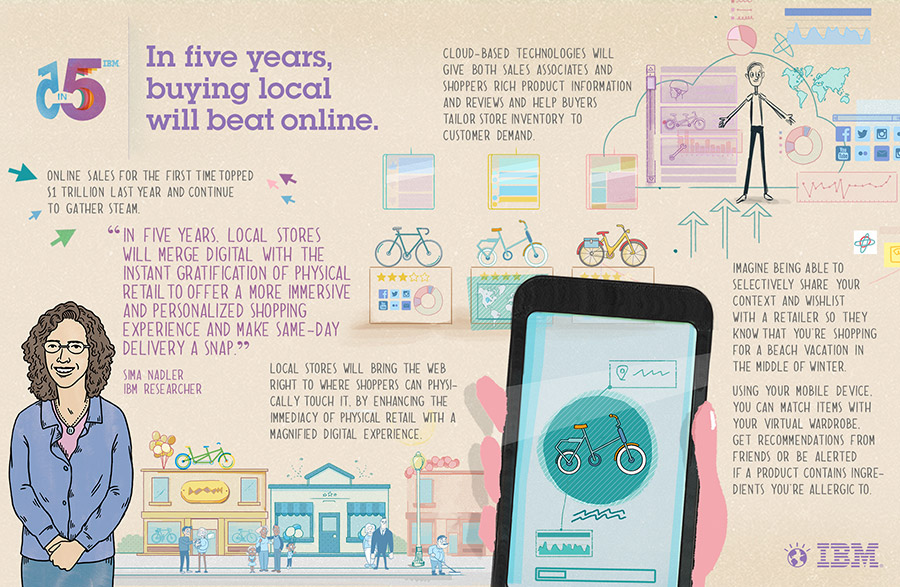An interesting research concerning the future of shopping has been recently published by IBM. The authors came to a surprising conclusion that the online shopping is reaching its peak and within 5 years from now the traditional brick-and-mortar stores will claim back its top spot.
The research predicts that we are going to see the traditional shopping experience looking more and more like the online one. IBM’s Watson app development platform is already moving into this physical-virtual space. An app called Fluid is a part of that same ecosystem. It builds online shopping experiences for retail businesses to drive customer engagement and conversion, has developed the Fluid Expert Personal Shopper powered by IBM Watson. The app calls upon Watson’s ability to understand the nuances of human language and uncover answers from Big Data. Consumers who use Fluid’s app will interact with rich media and dialogue with Watson, as their newfound “cognitive, expert personal shopper.”
IBM Research is exploring prototype software called the Virtual Stylist that uses data to help retailers more precisely predict clothing a customer will like, based on what complements the existing contents of their closet and their preferences. While many e-tailers today offer personalized recommendations, most are made by looking at the item you purchased, and what other people who purchased that item also bought – and then recommending to you those other products.
The instant gratification of traditional shopping will also play a significant role in re-emergence of brick-and-mortar stores. Two days delivery will feel like forever compared to being able to take your purchase back home immediately.
With the help of the cloud based technology a virtual shop assistant will be able to learn all about shoppers, from their shopping habits to their purchase history, and tailor recommendations to your unique taste and styles that will complement your existing wardrobe. Combine it with the ability to physically see and touch the products you are buying and you got the perfect shopping experience.
The instant gratification of traditional shopping will also play a significant role in re-emergence of brick-and-mortar stores. Two days delivery will feel like forever compared to being able to take your purchase back home immediately.
Clearly, this would have profound implications on ecommerce in China which has been developing at astonishing pace. By 2016, an estimated 423 million Chinese will be shopping online, up from today’s 220 million and there are reasons to believe that merging of the digital and the physical, as predicted by IBM researches, will be adopted in China at even faster pace.
First of all, connecting to the internet via mobile phone vs. computer has already become the primary way to get online for majority of Chinese.
The second reason is the traditional love of bazaar style of shopping experience in China which the online buying doesn’t provide.
Finally, Chinese get quickly accustomed to the rapid changes in lifestyle and are becoming increasingly impatient shoppers. The ability to get their hands on the purchase immediately is bound to become an important factor as well.
Here is the infographic from IBM’s research:




